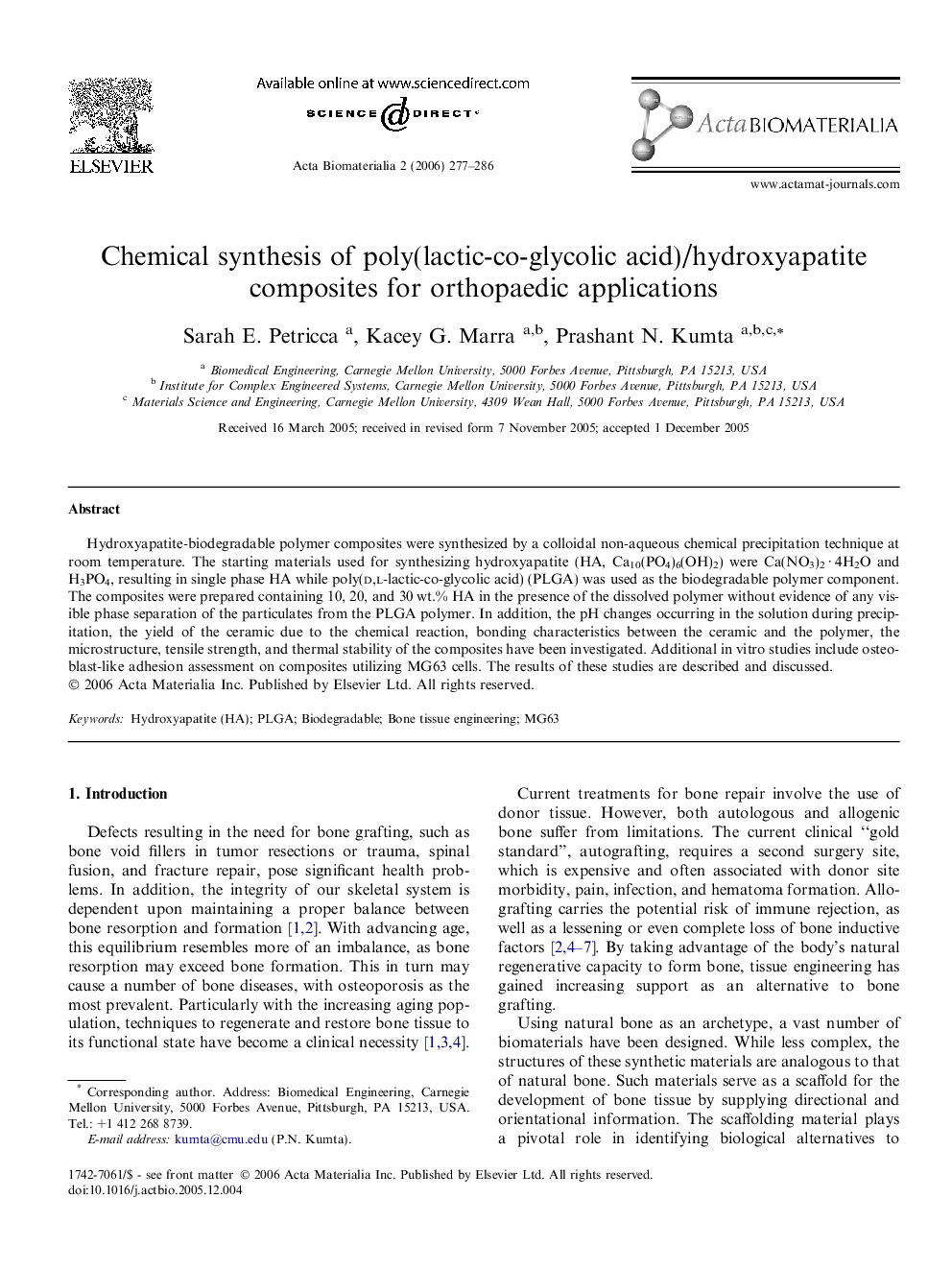| Article ID | Journal | Published Year | Pages | File Type |
|---|---|---|---|---|
| 2182 | Acta Biomaterialia | 2006 | 10 Pages |
Hydroxyapatite-biodegradable polymer composites were synthesized by a colloidal non-aqueous chemical precipitation technique at room temperature. The starting materials used for synthesizing hydroxyapatite (HA, Ca10(PO4)6(OH)2) were Ca(NO3)2 · 4H2O and H3PO4, resulting in single phase HA while poly(d,l-lactic-co-glycolic acid) (PLGA) was used as the biodegradable polymer component. The composites were prepared containing 10, 20, and 30 wt.% HA in the presence of the dissolved polymer without evidence of any visible phase separation of the particulates from the PLGA polymer. In addition, the pH changes occurring in the solution during precipitation, the yield of the ceramic due to the chemical reaction, bonding characteristics between the ceramic and the polymer, the microstructure, tensile strength, and thermal stability of the composites have been investigated. Additional in vitro studies include osteoblast-like adhesion assessment on composites utilizing MG63 cells. The results of these studies are described and discussed.
